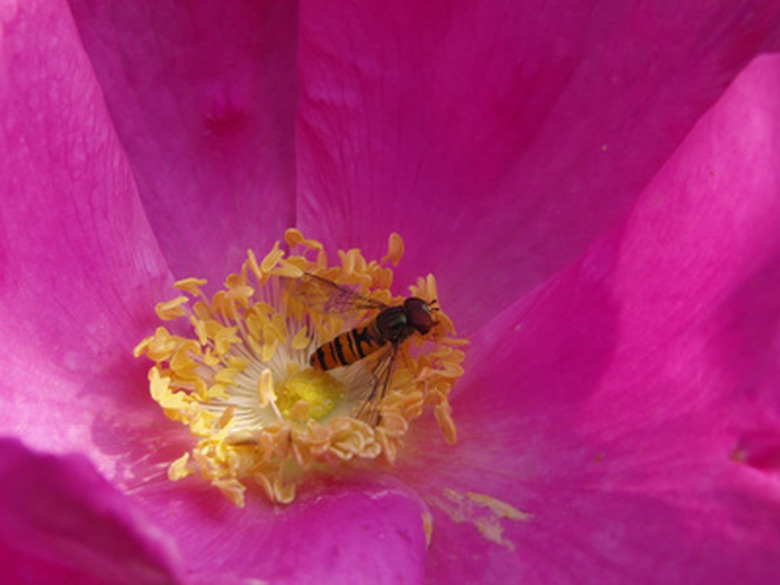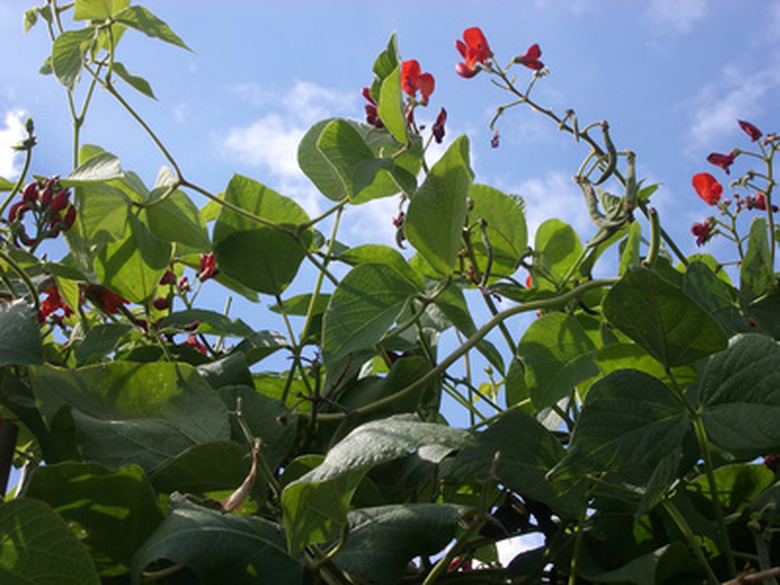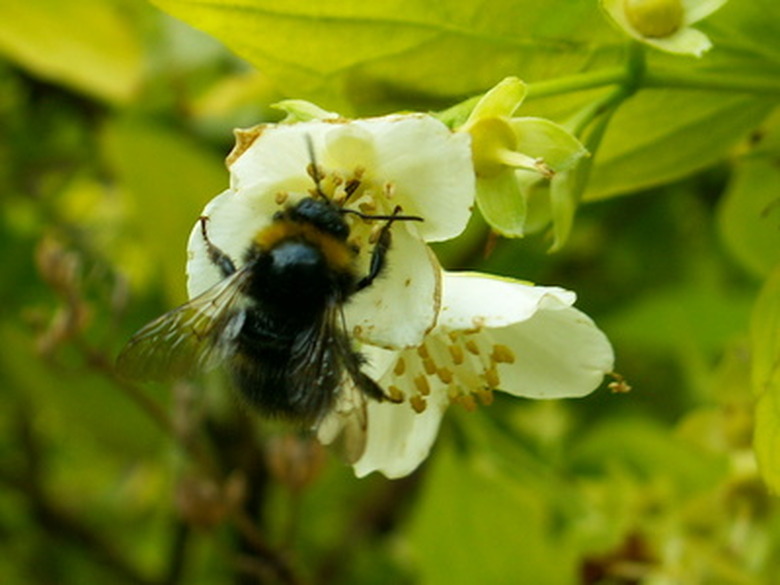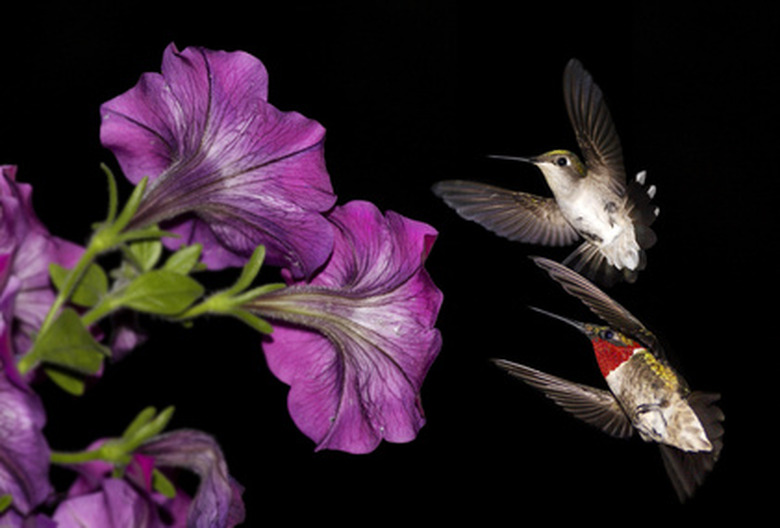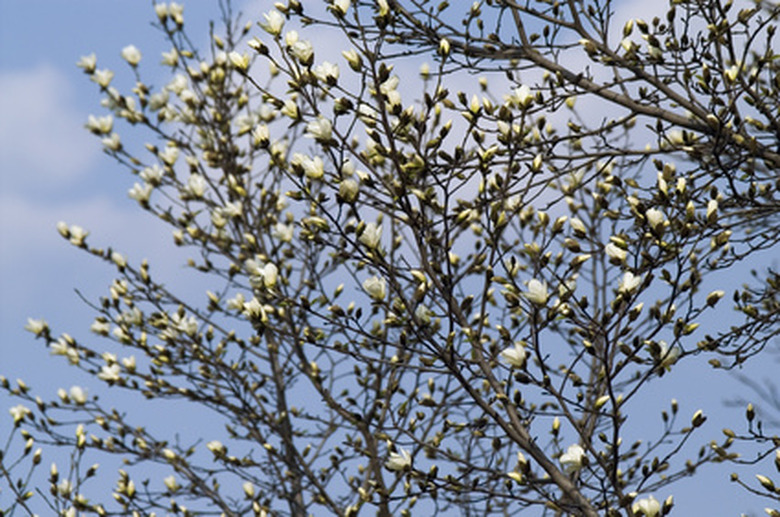Why Are Flowering Plants Important To The Earth & Humans?
The abundance and diversity of flowering plants has contributed to abundance and diversity of many other species. Humans depend not only on the flowering plants, or angiosperms, themselves, but on the plethora of organisms that they support in order to survive and proliferate.
History
History
Angiosperms evolved by using more mobile life forms to spread, and thus diversify, their genetic code. These more mobile life forms were insects, birds and mammals. The more the gene pool spreads and crosses, the more chances a species has to develop and foster mutations that make them more successful at surviving. At this, Angiosperms have been wildly successful. There are more than 250,000 species, making them the most abundant kind of plant on our planet.
Benefits for Soil
Benefits for Soil
Many flowering plants form symbiotic relationships with fungi and bacteria that help condition and add nutrition to the surrounding soil. Mycorrhizal fungus, for example, attaches itself to plant roots and trades energy stored in the plant roots for the fungus' ability to branch extensively into the soil and pull in water and nutrients. This breaks up the soil and provides aeration that often lasts after the host plant is gone. Legumes are a type of flowering plant that hosts the bacteria Rhizobia, which fixes atmospheric nitrogen for the host plant and surrounding plants to feed off of.
Benefits for Insects
Benefits for Insects
Most flowering plants rely heavily on insects to pollinate them. These include bees, butterflies, moths, flies and beetles. To entice these pollinators, they produce fragrance, bright petals and sweet (or rotten) smelling nectar. For their trouble, the pollinators feed on the sweet nectar, harvest the nutrient-rich pollen, and have also ensured the availability of future feeding by fertilizing the flowers. But even the stems, seeds, fruit, leaves and roots of these plants provide food and shelter for the insect world.
Benefits for Animals
Benefits for Animals
The flowers of angiosperms offer nectar to both bats and birds. Grazers may eat the blooms of grassland flowers and benefit from the chemical complexities found in flower petals. But the rest of the flowering plant is also usually edible. The leaves of flowering grasses are grazeable, the fruits produced by angiosperms are sweet and delicious to many herbivores and omnivores, and the roots feed digging and tunneling animals.
Benefits for Humans
Benefits for Humans
Humans can enjoy almost every aspect of flowering plants. Their fragrances and colors are stimulating to the senses, they produce abundant food from most every part, and many flowering plants even have medicinal properties. Flowering trees produce wood for crafting and building. Many animals that depend on flowering plants are edible for humans as well. Even ancient angiosperms that lived long before humans are a boon to us, since they became fossil fuels that power human technology.
Cite This Article
MLA
Belyeu, Samantha. "Why Are Flowering Plants Important To The Earth & Humans?" sciencing.com, https://www.sciencing.com/flowering-plants-important-earth-humans-6628704/. 22 November 2019.
APA
Belyeu, Samantha. (2019, November 22). Why Are Flowering Plants Important To The Earth & Humans?. sciencing.com. Retrieved from https://www.sciencing.com/flowering-plants-important-earth-humans-6628704/
Chicago
Belyeu, Samantha. Why Are Flowering Plants Important To The Earth & Humans? last modified August 30, 2022. https://www.sciencing.com/flowering-plants-important-earth-humans-6628704/

